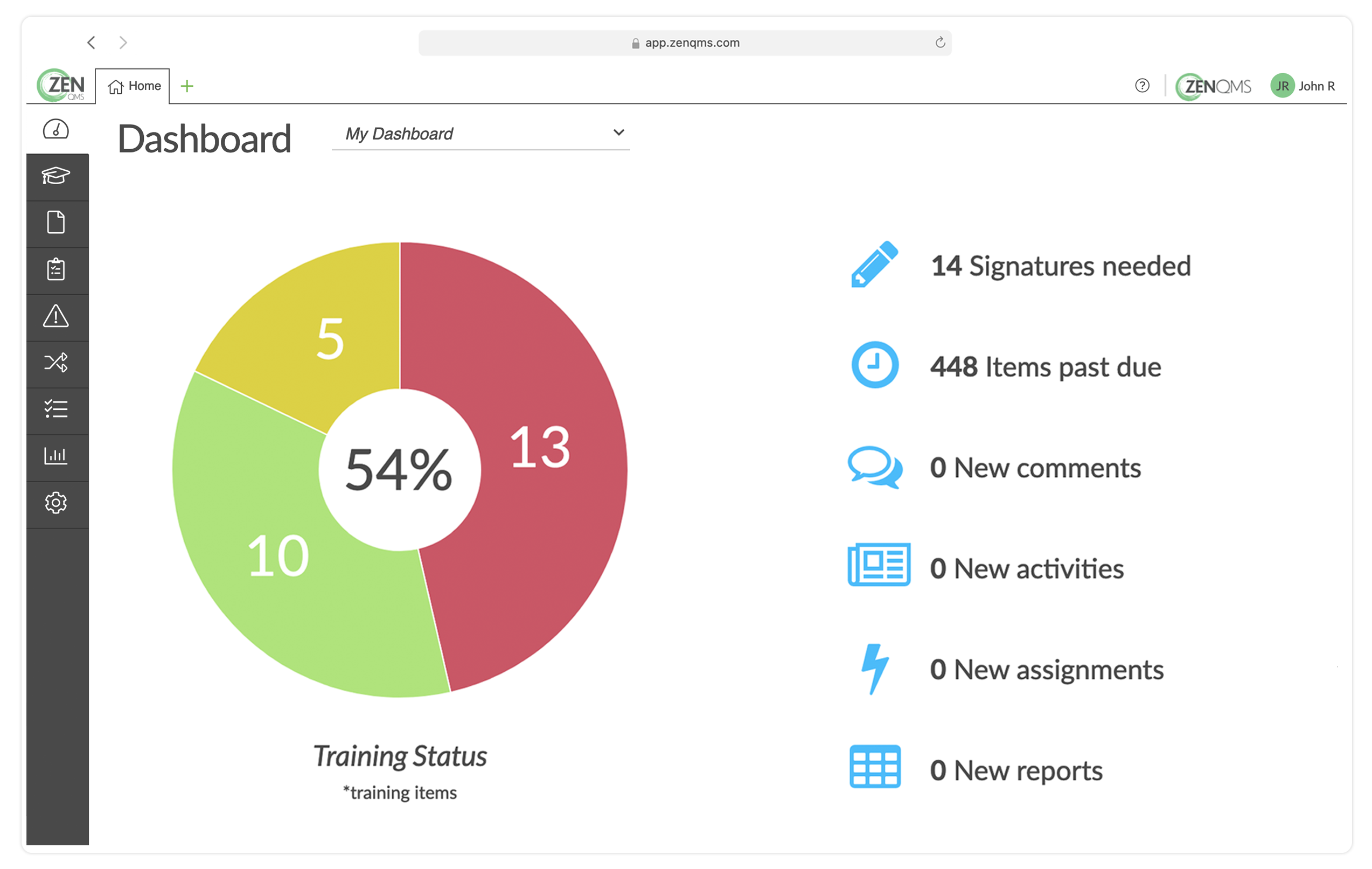Are your training materials in a state of control?
What is a training matrix?
For life sciences organizations regulated by the Food and Drug Administration (FDA), tracking employee training takes priority. That means making sure training is properly assigned, completed, recorded, and verified for every employee.
To stay organized and compliant, these companies rely on a training matrix. In its simplest form, a training matrix is an organizational tool that companies use to determine what their employees are responsible to train on, based on job function, for compliance purposes. These assignments can include following standard operating procedures (SOPs), engaging with video and audio recordings, and participating in live training sessions.
Why do you need a training matrix?
It is the responsibility of organizations in regulated industries, as far as the FDA is concerned, to make sure all necessary job tasks are performed in a consistent manner and training documentation remains in a state of control. Failure to have, or properly utilize, relevant SOPs may result in a warning letter or Form 483. These notices can be financially damaging and disastrous to a company’s reputation as they are made public on the FDA’s website and shared by the life sciences community at large.
When procedure violations or incomplete training compliance leads to sanctions by the FDA, "inadequate training of personnel" is often cited as the cause. Lack of training on required SOPs is the reason behind many costly failures during inspections.
The Code of Federal Regulations Title 21 states:
Each person engaged in the manufacture, processing, packing, or holding of a drug product shall have education, training, experience, or any combination thereof to enable that person to performed the assigned function
Training in current good manufacturing practice (CGMP) shall be conducted by qualified individuals on a continuing basis and with sufficient frequency to assure that employees remain familiar with CGMP requirements applicable to them.
But while a training matrix can help avoid these problems, a company that relies on a training matrix inside a paper/spreadsheet-based learning management system (LMS) or quality management system (QMS) is at a disadvantage. In fact, FDA compliance issues is one of the top signs your training matrix just isn't working.
When new sites and employees are added, the amount of standard operating procedures (SOPs) increases exponentially. And when SOPs increase, so does the complexity of the matrix, causing problems down the road. An Excel spreadsheet simply can’t handle a training matrix of that complexity.
The benefits of an electronic learning management system
The FDA code sets a very high bar for compliance. There can be thousands of regularly-issued SOP changes that affect thousands of employees. Not only does each employee have to train on each required SOP, but proof of that completed training has to be documented. The sheer volume of SOPs that have to be checked and validated for each employee practically requires an electronic learning management system (eLMS) be used to maintain compliance.
An eLMS is a software application that helps deliver, track, and report on the completion of training materials in order for employees, and the parent company, to meet compliance standards.
Many life sciences companies (like labs, biotechs, and CMOs) still work with outdated paper-based training matrices or hybrid systems that cost thousands in annual administrative work hours. Alternatively, a fully-implemented eLMS solution can streamline and automate training in a way that eliminates common errors and provides regular updates to improve compliance.
In addition, an eLMS can administer and grade proficiency tests and control the sequence of courses. When one course is satisfactorily completed, the next course in the sequence is automatically launched or scheduled, and progress is immediately recorded in the training matrix. Managers no longer have to chase employees to remind them about training or beg for signatures. As a result, administrative work is drastically reduced.

eLMS vs eDMS vs eQMS
To streamline a company’s quality control operations, including managing the training matrix, many regulated companies opt for an all-in-one electronic quality management system (eQMS), which serves as the eLMS, eDMS (electronic document management system) and so much more. An eQMS is a single, integrated software solution that helps teams effectively manage, track, and report on their quality processes. It is an easier way to stay compliant, compared to an expensive collection of disparate software products that may not communicate well with each other.
An eQMS handles the full range of quality control data processes to ensure compliance. In addition to training management, an eQMS supports:
- Document Management
- Issues and Change Control Management, including deviations and CAPAs
- Auditing and Vendor Management
For life sciences companies, a fully validated eQMS offers 21 CFR Part 11/ Annex 11-compliant e-signatures, ISO 9001 and ISO 27001 certifications for meeting the regulatory requirements of a quality system, and a SOC 2 Type II report ensuring complete data privacy and security.
An eQMS is infinitely scalable to handle the quality demands of companies of any size, across any life sciences vertical. And cloud-based systems connect remote teams and sites with no loss of accuracy or security.
Curious how an eQMS can automate training management and streamline your training matrix? We can show you!


